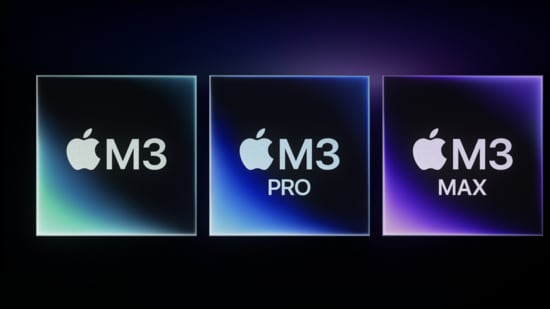Uncharacteristic timing for an Apple keynote. A Halloween theme for good measure. On the agenda – Apple’s Mac computing ecosystem. The direction, distinctly about setting a benchmark again. This is perhaps why a few years ago, Apple closed the chapter on Intel’s chips for their Mac computing device line-up. There was a subtle reference too, thrown in for good measure. Here and now, Apple has unveiled three new chips, the M3 family, which will be powering the new 14-inch MacBook Pro, 16-inch MacBook Pro and new 24-inch iMac line.

There are three chips which make the M3 family, at least for now, though it may not be fallacious to expect an ‘Ultra’ later. The M3, M3 Pro and M3 Max include significant improvements in terms of raw performance, graphics capabilities and on the MacBook series, focus on reducing power consumption for longer battery life – so much so that the claim is the new MacBook Pro 16 can go as long as 22 hours on a single charge, in certain use-cases.
As the entry spec, the M3 chip deploys an 8-core CPU with 4 performance cores and 4 efficiency cores. Apple claims it is up to 35% faster than the M1 chip and up to 20% faster than the M2 from last year. Significant steps forward, without doubt, from chips that were already performance benchmark definers when compared with Intel and AMD’s chips for the Windows computing device ecosystem. There’s also a 10-core GPU with a new architecture.
“With 3-nanometer technology, a next-generation GPU architecture, a higher-performance CPU, faster Neural Engine, and support for even more unified memory, M3, M3 Pro, and M3 Max are the most advanced chips ever built for a personal computer,” says Johny Srouji, Apple’s senior vice president of Hardware Technologies, in a statement.
Dynamic caching, an industry first, will allow software to determine memory allocation for each app or game in real-time, instead of working predefined minimum or maximum allocation. Apple insists this will be transparent to developers (they don’t necessarily have to make any changes either) and should significantly speed up performance of apps and games.
The new GPU also adds Mesh shading and Ray Tracing, latter in particular good news for graphics and gaming applications since more accurate shadows will be rendered. The M3 machines will have up to 24GB memory. These are firsts for Apple Silicon, and in a way, bring parity with Nvidia and AMDs dedicated GPUs. Additionally, game developers can simply code for improved detailing and shadows for rendering using any of the M3 chips, without having to need a dedicated GPU.
A step up is the M3 Pro, which has a 12-core CPU that’s up to 20% faster than the M1 Pro chip. There are 6 each for performance and efficiency cores, alongside an 18-core GPU that includes everything the base M3 has, with even more performance. Memory goes up to 36GB.
Since the M3 Max sits at the top of the chain, this gets a 16-core CPU with 12 performance cores and 4 efficiency cores, claiming overall performance to be up to 50% faster than the M2 Max and as much as 80% faster than the M1 Max (that was barely a couple of years ago, that’s how far along we’ve come).
The M3 Max’s graphics arrive as a 40-core GPU, up to 128GB memory and has 92 billion transistors, which Apple claims will allow AI developers to work with even larger models with billions of parameters.
All these performance gains come without sacrificing battery life. The key here would be the efficiency cores on the M3 chips being as much as 50% faster than the efficiency cores on the M1 chips and 30% faster than the M2 – generational improvements and then some, but the result being faster performance without losing per watt advantages. In fact, the M3 can return the same results for many use-cases, using less than half the power of the M1. Performance cores are also 30% (M1) and 15% (M2) faster, generationally.
Specific to gaming, a question remains to be answered. While all these hardware-driven improvements provide significant new capabilities for game developers and indeed graphics intensive tasks, will enough developers be encouraged to speed up porting games from other platforms such as Windows, to the Mac? Nevertheless, this feels like we are one step closer to the Macs achieving full potential as a gaming platform. Between this, and the Game Porting Toolkit released over the summer, it seems to be getting there.
 Subscribe today by clicking the link and stay updated with the latest news!” Click here!
Subscribe today by clicking the link and stay updated with the latest news!” Click here!